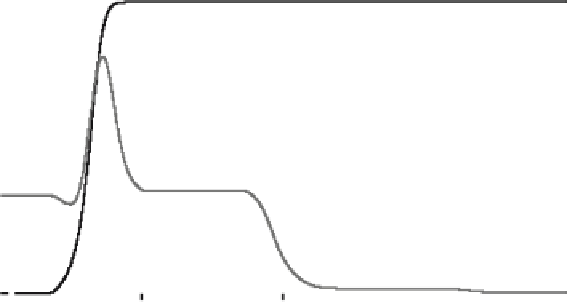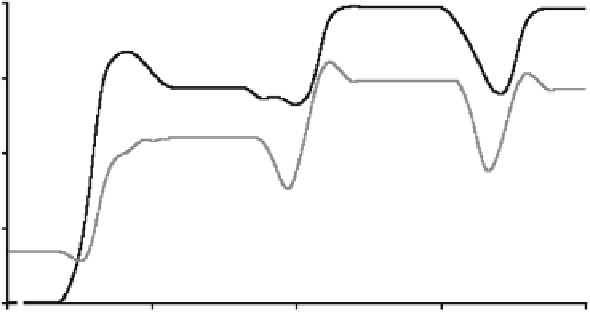Database Reference
In-Depth Information
1: SEROPREVALENCE
2: MOSQ % INFECTED
1:
1.00
1
1
1
2:
0.03
1:
0.50
2:
0.015
2
2
1:
0.00
2
2
2:
0
1
0.00
273.75
547.50
821.25
1095.00
Days
Fig. 12.11
1: SEROPREVALENCE
2: MOSQ % INFECTED
1:
0.9
2:
0.035
1
2
1
1
2
1:
0.45
2:
0.02
2
2
1:
0
2:
0.005
1
0.00
273.75
547.50
821.25
1095.00
Days
Fig. 12.12
12.4.3 Weather as an Extrinsic Driver of Outbreak Severity
Variations in seasonal weather patterns are a major driver of variation in WNV
incidence among years
12
. This is primarily because mosquitoes require minimum
temperatures to begin host seeking and oviposition. What happens if spring tem-
peratures arrive earlier or later than average, changing the timing and duration
12
Andreadis, T.G., J.F. Anderson, C.R. Vossbrinck, and A.J. Main. 2004. Epidemiology of West
Nile virus in Connecticut: A five-year analysis of mosquito data 1999-2003. Vector-Borne and
Zoonotic Disease. 4: 360-378.
























